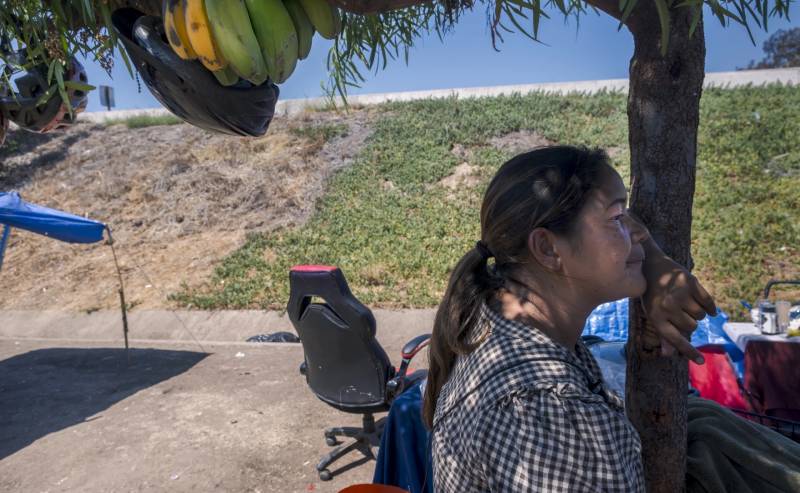Here are the morning’s top stories on Wednesday, July 17, 2024…
- For most migrants and asylum seekers, San Diego is not a final destination. It’s a layover. But more migrants are choosing to stay in San Diego. And in many cases, they’re becoming homeless.
- California will have to build public charging stations at an unprecedented — and some experts say unrealistic — pace to meet the needs of the millions more electric cars expected on its roads in the next decade.
Migrants And Asylum Seekers Living In San Diego’s Homeless Encampments
Customs and Border Protection has released more than 100,000 migrants into San Diego in the past year. The vast majority—more than 95% of them—only stay in town for a few days before connecting with relatives or friends in other parts of the country, according to data from the County of San Diego. But some of those with nowhere else to go are becoming homeless.
PATH is an organization that seeks to end homelessness by providing supportive services and building affordable housing throughout the region. Last September, PATH started tracking individuals who identify as migrants who are seeking shelter at the city’s Homelessness Response Center, a centralized hub where homeless San Diegans can get connected to various services.
Since then, staff have counted more than 1,100 migrants seeking shelter. Some of those numbers may include duplicates or one individual who made multiple visits, a PATH spokesperson said.
California Needs A Million EV Charging Stations — But That’s ‘Unlikely’ And ‘Unrealistic’
California will have to build public charging stations at an unprecedented pace to meet the needs of the seven million electric cars expected on its roads in less than seven years.
